How to make a winter centerpiece – using white flowers for a beautiful table display
Philippa Craddock shares how to construct this delicate display with winter flowers
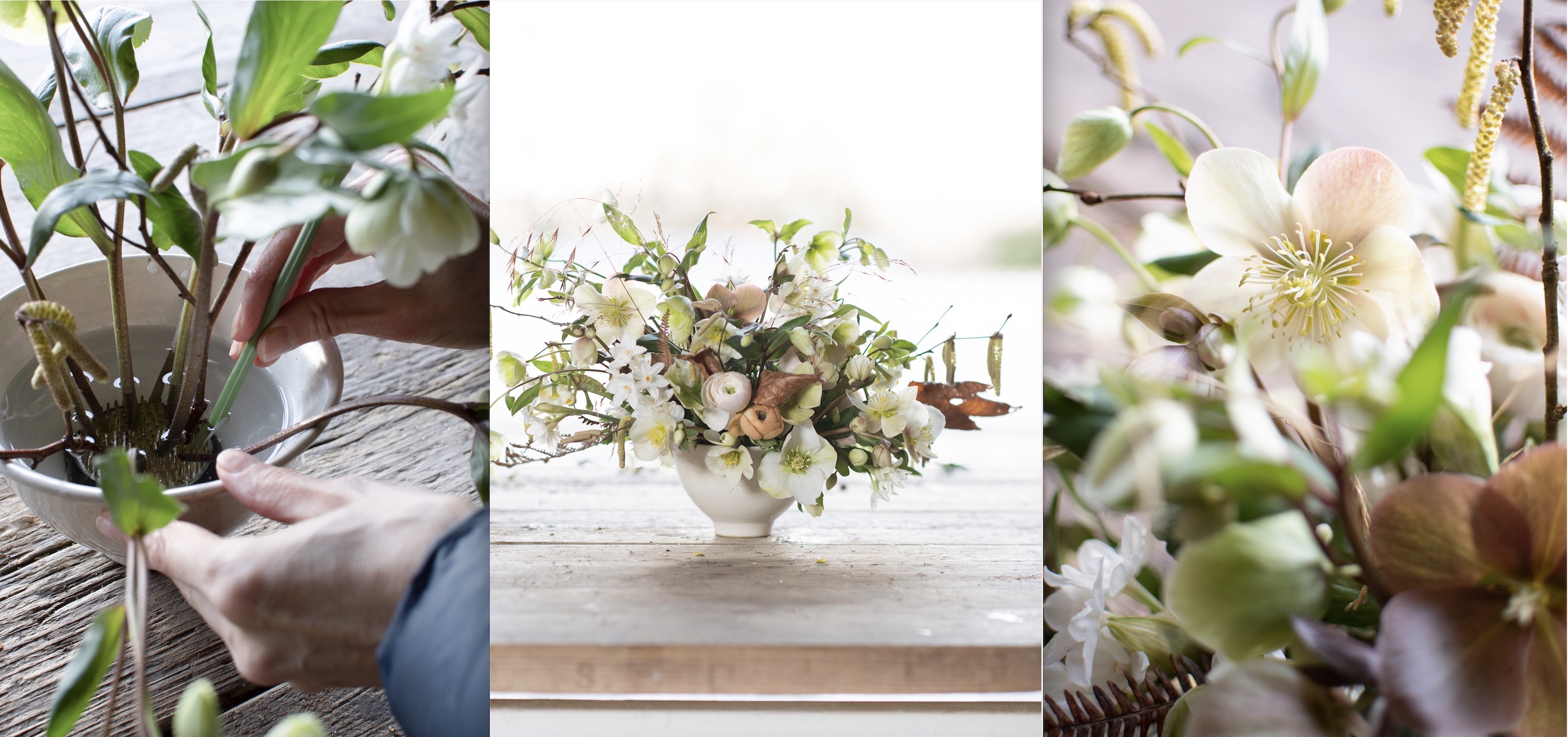

Renowned British florist Philippa Craddock designed Prince Harry and Meghan Markle's wedding flowers, and offers a series of online masterclasses for anyone wanting the royal touch for their own flower displays at home.
Here, she shows how to put together a stunning yet simple winter table centerpiece that celebrates the quiet beauty of our favorite winter blooms.
How to make a winter centerpiece
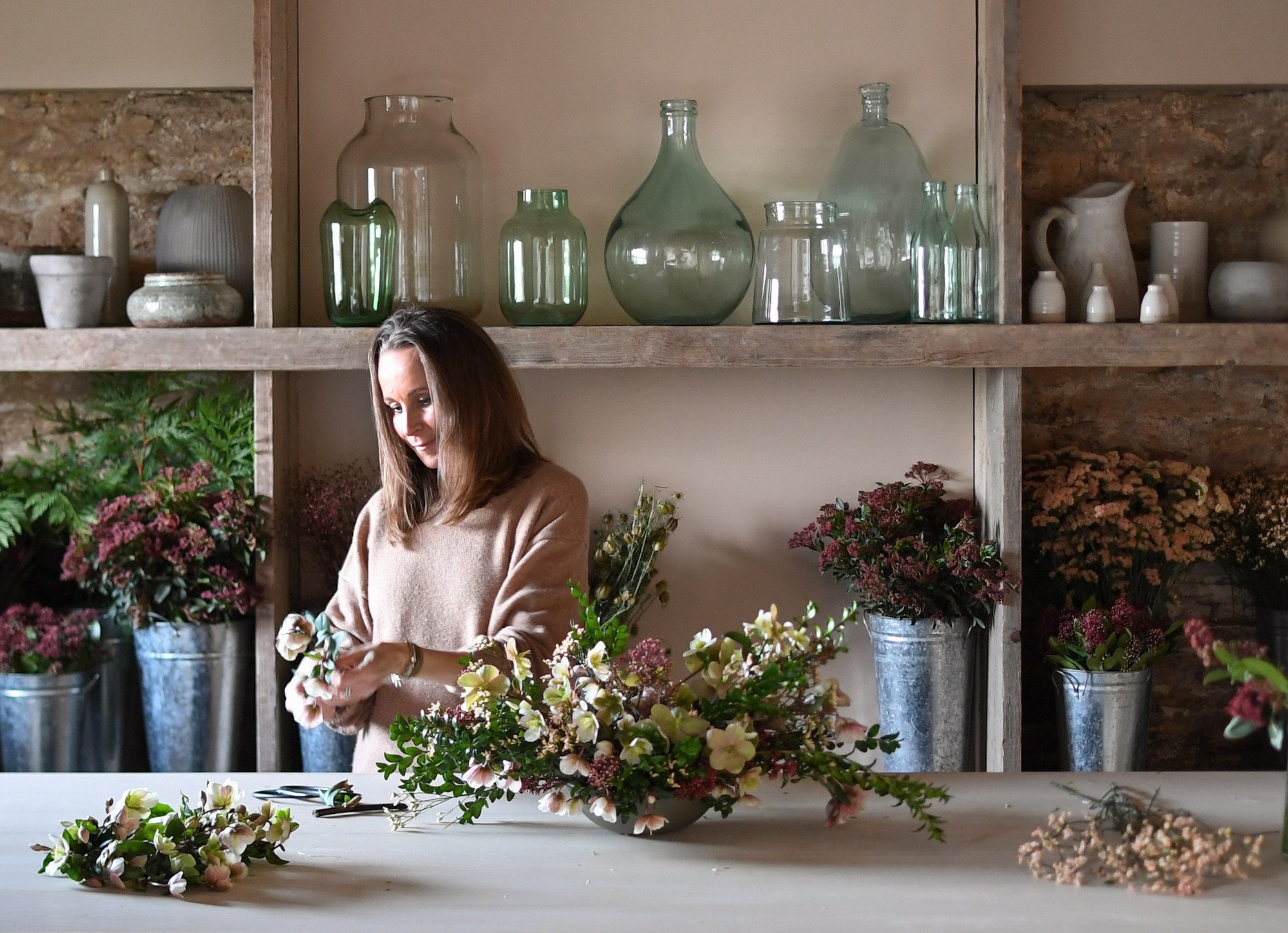
Whether you want to add this to your gallery of Christmas table centerpiece ideas, Thanksgiving centerpiece ideas, or simply want to bring some life and beauty to your home in the wintertime, this display is a perfect choice.
‘I love winter designs with a subtle warmth to them,' explains its designer, florist Philippa Craddock. 'The blush-fawn tone of both the ranunculus and hellebores works beautifully, adding warmth to the predominantly white and green palette of the design. The delicate detail of the grass, ferns, and branches gently enhances the warm browns within the design.’
When thinking about what the rules are for table centerpieces, paying attention to the details is crucial: texture and contrast is an important addition to any floral display. Planning beautiful Christmas dining room decor is a fabulous way to make yuletide magical and memorable.
‘The combination of the different stems brings depth to the design,' Philippa explains. 'The full petals of the hellebores, set against the lace-like fonds of the bracken and the miniature catkin columns, works particularly well.'
You will need…
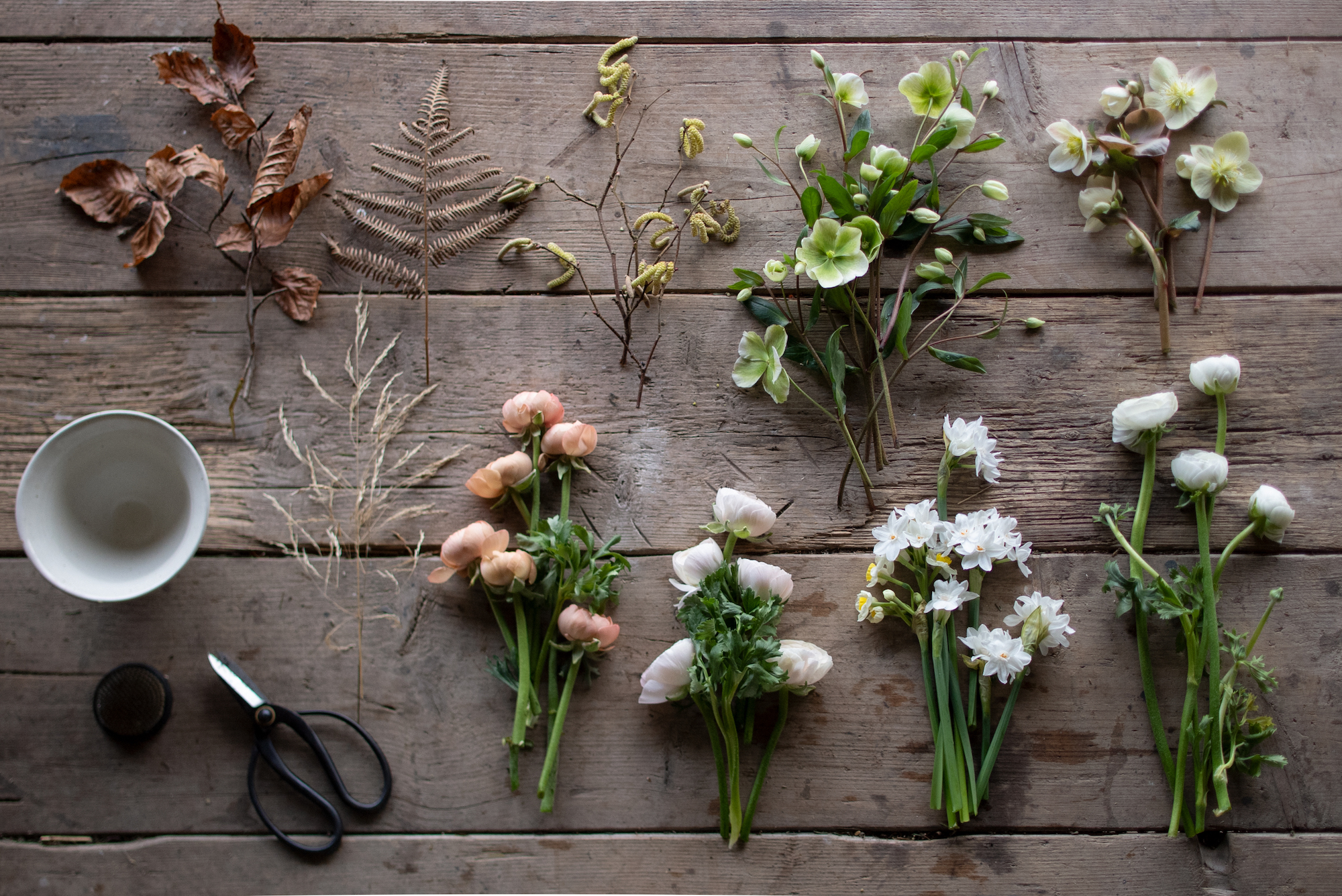
Vessel & Prop ‘I used a small compote bowl (15cm diameter) and a Kenzan (a reusable mechanic that supports and holds your stems in place),’ says Philippa. ‘You can find both from various stockists online.’
Ingredients ‘My selection of winter flowers includes late-flowering hellebores, narcissus and early-flowering ranunculus, plus a few foraged stems including dried grasses, ferns and small branches with dried leaves.’
1. Insert your Kenzan in the bowl
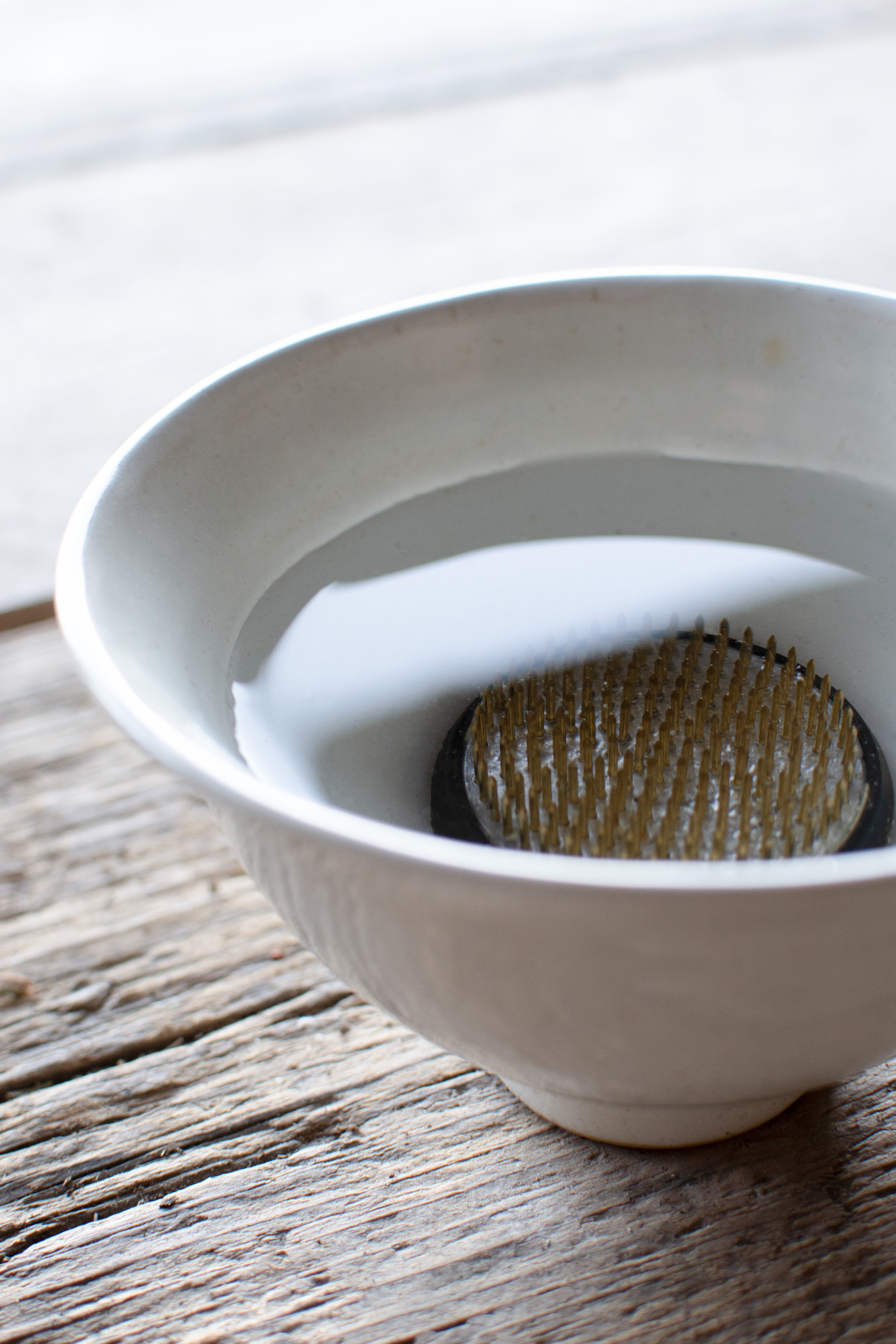
‘Place the Kenzan inside your compote bowl, and add water. The Kenzan pin holder will support your stems, firmly and gently holding them upright in whichever position you choose,' explains Philippa.
'As you add the stems to the vase, hold them almost like a pencil, with your hand towards the end of the stem. This gives you greater control and helps to stop the stem from breaking.’
2. Create the display's basic shape
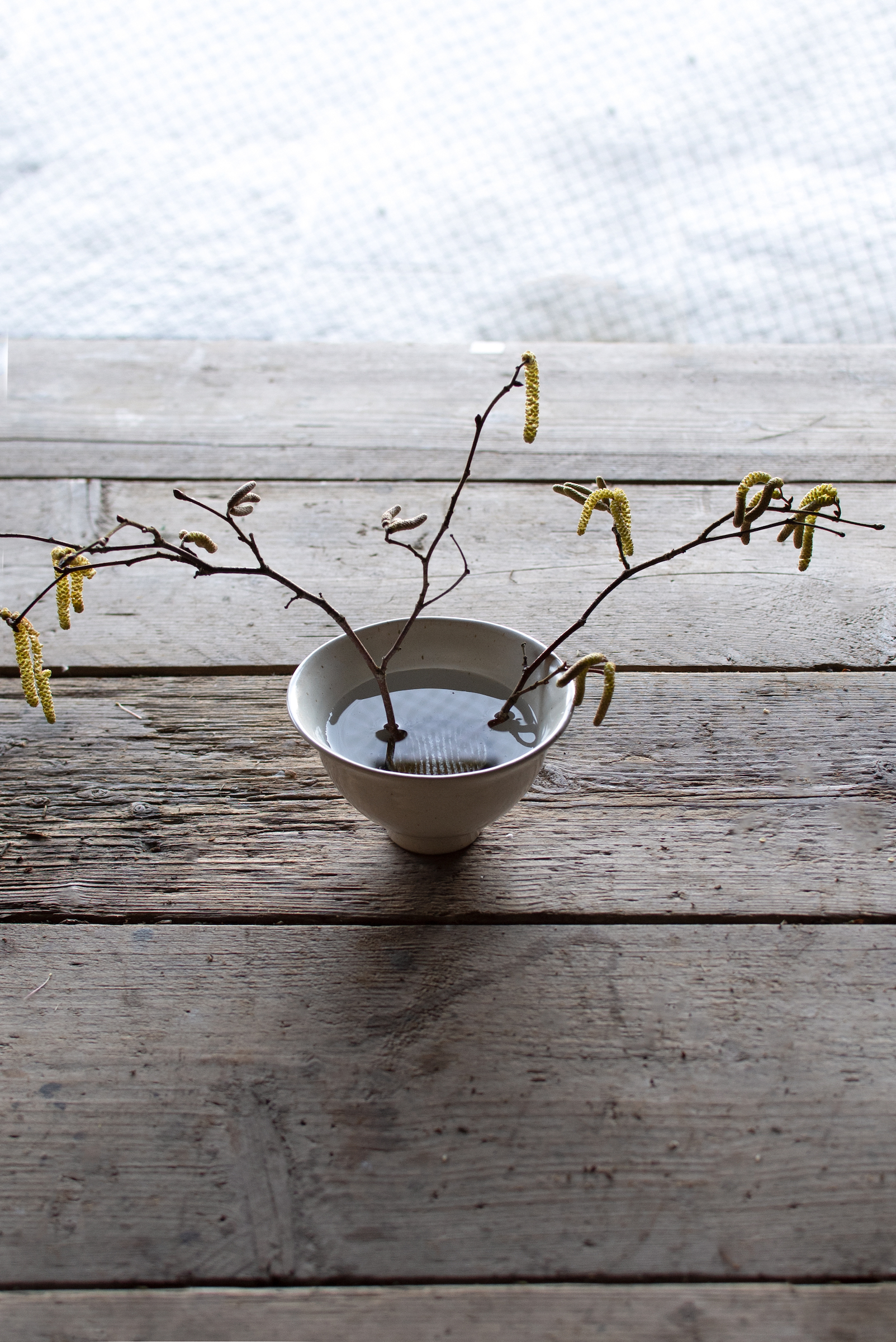
‘Select two initial stems of differing heights to form the base shape, placing them along one line of the Kenzan,' says Philippa.
'Small branches (as I used), blossom, and greenery are often great options for these first stems, although it can also be a flower with a strong stem and shape.
'The first two stems give you a shape to your base framework, which helps you to position the next stems, to create a design with movement and interest.’
3. Arrange your focal stems

‘Your main flowers are your focal flowers,' Philippa explains. 'In this design, these include hellebores, followed by the ranunculus. Add these stems first to continue creating the shape of your design.’
4. Insert the filler stems
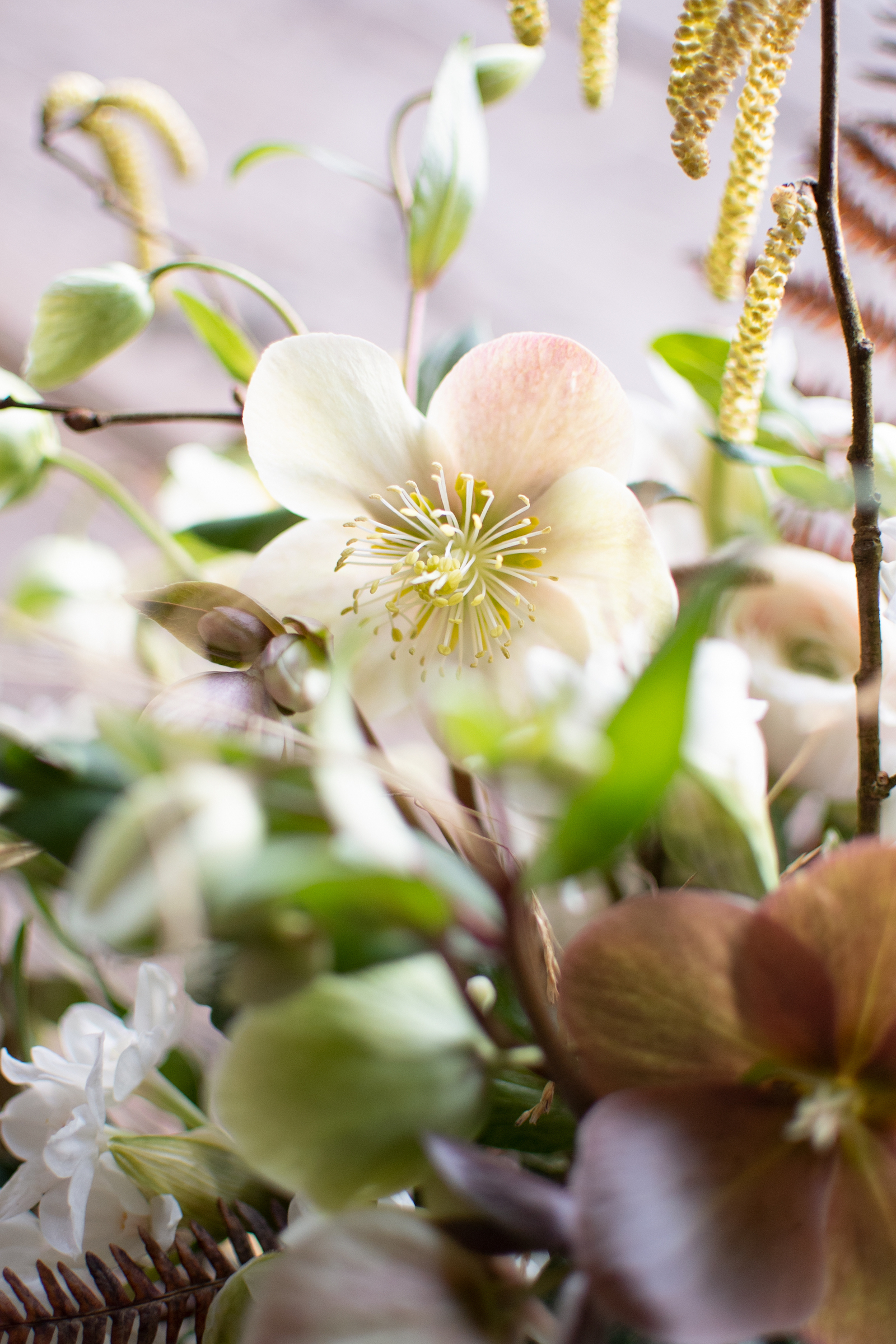
'The next step is to add your filler stems. The narcissus here are used as filler flowers, adding texture and depth to the design.’
5. Add the final flowers
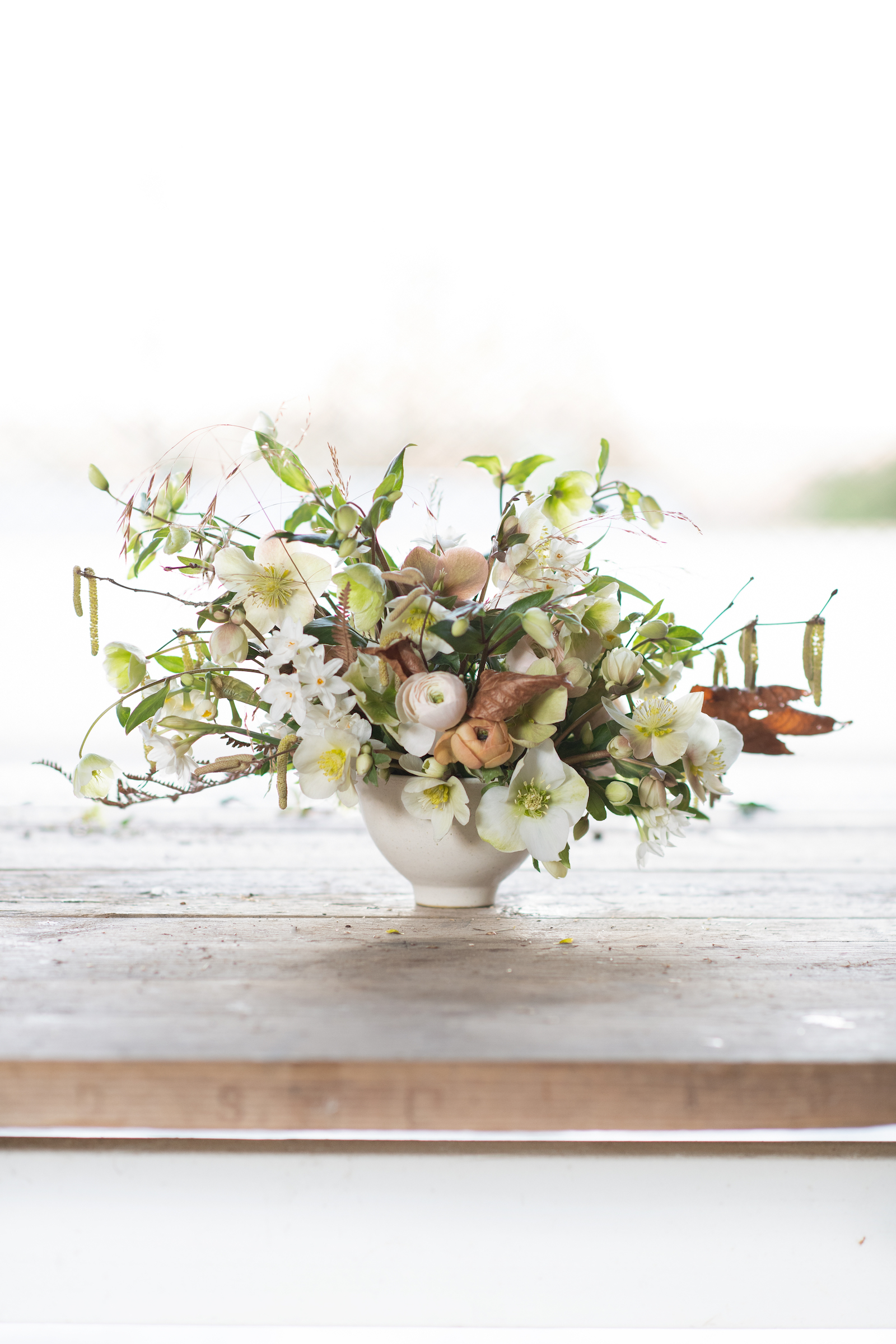
‘I prefer designs where the lip of the vase is interrupted, with flower heads placed so they naturally fall over the edge. By interrupting the line of the vase, the vase and the flowers become one larger design, rather than two individual components.
'Select naturally “drooping” flower heads – in this design, both the narcissus and hellebores are great options.’
6. Care for your display
‘The design will last indoors for several days. With a large number of flowers and a relatively small bowl, the design will need to be topped up with water once per day,' Philippa advises.
Philippa Craddock has launched a new monthly membership. Sign up now, and find more guides and online masterclasses, plus details of her fortnightly newsletter at philippacraddock.com
Sign up to the Homes & Gardens newsletter
Design expertise in your inbox – from inspiring decorating ideas and beautiful celebrity homes to practical gardening advice and shopping round-ups.
Andrea has been immersed in the world of homes, interiors and lifestyle since her first job in journalism, on Ideal Home. She went from women's magazine Options to Frank. From there it was on to the launch of Red magazine, where she stayed for 10 years and became Assistant Editor. She then shifted into freelancing, and spent 14 years writing for everyone from The Telegraph to The Sunday Times, Livingetc, Stylist and Woman & Home. She was then offered the job as Editor on Country Homes & Interiors, and now combines that role with writing for sister title homesandgardens.com.
-
 How to grow impatiens – garden experts reveal the secrets to growing this shade-tolerant, sparkling summer plant
How to grow impatiens – garden experts reveal the secrets to growing this shade-tolerant, sparkling summer plantBoth 'Busy Lizzie' and 'New Guinea' impatiens can thrive in shady yards
By Ellen Wells Published
-
 Charli XCX's dining room is a 'treasure-trove' of one-of-a-kind pieces – it's the most unique hosting space I've ever seen (and surprisingly replicable)
Charli XCX's dining room is a 'treasure-trove' of one-of-a-kind pieces – it's the most unique hosting space I've ever seen (and surprisingly replicable)The singer's Tudor-style dining room features eclectic furnishings, a mix of patterns and bright colors that all work together beautifully
By Hannah Ziegler Published